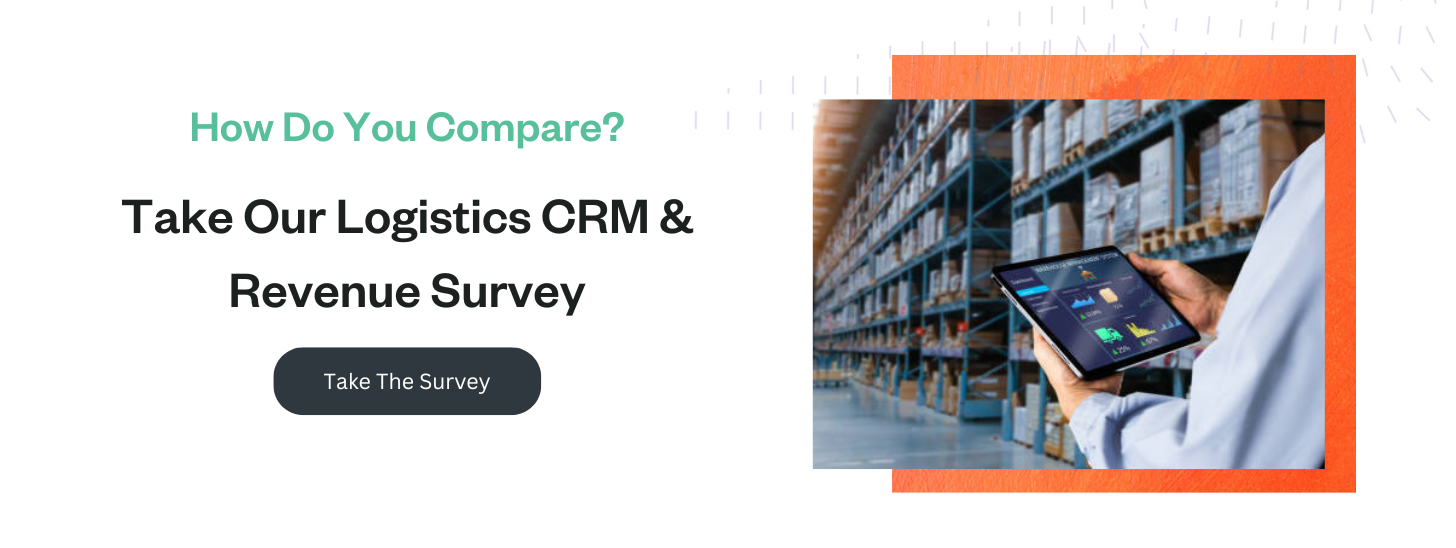Logistics and Supply Chain Marketing in 2025: The Starter Guide

If you’re a supply chain management or logistics company still relying solely on trade shows, industry publications, and word-of-mouth for leads, it’s time to evolve. Properly executed inbound marketing has been proven to be ten times more effective for lead conversion than traditional outbound marketing. In 2025, success in this industry requires a modernized approach. One that integrates digital marketing, Revenue Operations (RevOps), and AI-driven strategies to maximize efficiency and impact. Keep reading to learn how you can build a pipeline of qualified inbound leads today.
Logistics and Supply Chain Marketing: The Starter Guide
What is logistics and supply chain marketing?
Before we talk about marketing, we should probably get on the same page about a couple of definitions.
- Involves overseeing the flow of goods and services.
- Manages processes that transform raw materials into final products.
- Helps businesses cut costs and improve delivery times through efficiency.
- Refers to the planning, execution, and management of goods, services, and information.
- Ensures the right goods get to the right place at the right time.
It's an incredibly broad sector (and arguably two separate industries). Regardless, most businesses in this category have key problems they are looking to solve:
- You're not sure how to reach a target audience that is broad and varied
- You're not sure how to effectively communicate the number and/or type of services that you provide
- You're spending time chasing down unqualified leads
- You cannot determine the true value marketing brings to your business
- When you do talk to a lead, they do not have a strong understanding of the services they need
Effective inbound marketing is about delivering solutions and opportunities that have a positive impact on people and your business. A strategic inbound marketing approach, one that integrates RevOps and AI-driven solutions, can help logistics and supply chain businesses overcome these challenges.
Read on to learn some ways you can grow your business online.
What to consider when marketing logistics and supply chain companies
Both supply chain and logistics companies need to adapt to meet the rapidly changing needs of consumers and businesses. Marketing is a critical channel for this purpose.
Align with the buying process
Find out what your customers are really looking for. Ask them what keeps them up at night, and look through sales records of what drove the customer to interact with your brand.
Since the logistics and supply chain management sector is about the distribution of tangible goods, your customers may be concerned with transportation, costs, lead time, lowering risk, customer service, and inventory management. Your marketing should help them solve their pain points. For example, they might have an urgent need to drastically reduce their shipping charges. You can help educate them on how they can achieve that goal.
AI-powered data analysis tools can provide deeper insights into customer behavior, allowing for more personalized and effective marketing strategies.
Incorporate Revenue Operations (RevOps)
- Marketing efforts are directly tied to revenue-generating activities
- Lead qualification and nurturing are optimized
- Sales teams receive higher-quality leads with rich insights
- Marketing performance is continuously analyzed and improved
Leverage AI for Smarter Marketing

- Predictive analytics: AI can analyze historical customer data to forecast trends and optimize marketing campaigns.
- Chatbots and virtual assistants: AI-powered chatbots enhance customer engagement by providing instant responses and guiding prospects through the sales funnel.
- Automated content personalization: AI tools can tailor marketing messages based on a lead’s browsing history, behavior, and preferences, increasing conversion rates.
- SEO optimization: AI-driven tools can identify the most relevant keywords and content strategies to improve search rankings.
Build Targeted Buyer Personas

- Understand your audience to market effectively.
- Identify key decision-makers and influencers in the purchasing process.
- Develop detailed buyer personas to tailor marketing messages to the right audience segments.
- Update personas regularly based on AI-driven customer insights and changing industry trends.
Even just writing out 1-2 buyer personas will help you refine your marketing. Here's a template to get you started.
Focus on Differentiation
- Do you specialize in temperature-controlled shipping?
- Offer unmatched service guarantees?
- Provide advanced tracking and visibility?
Plan for Results with Data-Driven Goals
- Increase in website traffic and lead conversions
- Higher engagement rates on digital content
- Improved marketing-qualified lead (MQL) conversion rates
- Shorter sales cycles due to better lead nurturing
Create a Comprehensive Marketing Plan
A marketing plan will codify your strategy. It is a valuable tool for demonstrating your strategy to colleagues, partners, and your executive team. There are several items you'll want to make sure to address in your marketing plan.
- Mission and objectives: What are your business’s overarching goals?
- Key initiatives: Focus areas such as website redesign, paid advertising, and content marketing
- Specific goals and timelines: Example: Launch an AI-powered chatbot by Q2 to enhance lead nurturing
- Competitive positioning: How does your brand stand out?
- Resource allocation: Tools, personnel, and budget requirements
Overall, your marketing plan should summarize how you will show customers that working with your company will help them mitigate risks and reduce costs in the distribution process.
Allocate Resources for your Marketing Initiatives.
You’ll need to identify what you’ll need and who you’ll need to work with to accomplish your marketing goals. For example:
- do you need an outside agency or a freelance writer to help you with SEO and content creation?
- Are there tools you require to execute your marketing objectives, like an email marketing platform or CRM?
- Will you need to create additional marketing roles and hire externally?
The Role of RevOps in Marketing and Sales Alignment
For your inbound marketing strategy to work, sales and marketing teams must collaborate seamlessly. A well-integrated CRM system can provide visibility into lead interactions across digital platforms, helping sales teams personalize their approach. Closed-loop reporting ensures that marketing efforts are continuously refined based on performance data.
- Automating lead scoring.
- Identifying high-intent prospects.
- Optimizing outreach efforts.
Get Started Today
- Capture attention.
- Educate prospects.
- Build trust faster.
You want to grow. We want to help.
You know your business; we know how to make it look good online. We’ve helped logistics companies like yours increase leads by more than 332%. We hone in on exactly what it takes to succeed online in this competitive industry. Contact us today.


